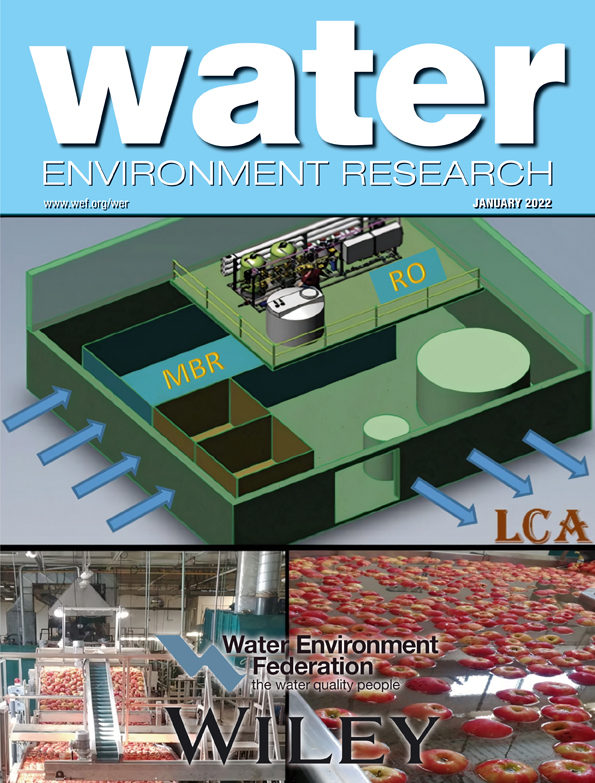Life-cycle assessment of full-scale membrane bioreactor and tertiary treatment technologies in the fruit processing industry
Abstract
A life-cycle assessment (LCA) study was completed to assess the environmental impacts of an on-site wastewater treatment system in the fresh-cut fruit processing industry consisting of a membrane bioreactor (MBR), followed by reverse osmosis (RO) and ultraviolet (UV) disinfection. The system boundaries comprised raw materials extraction and processing, transportation, construction, operation, and waste disposal. SimaPro 8.0.4.26 was used as the software tool, supported by two impact assessment methods (ReCiPe v1.11 and TRACI v2.1). Analysis showed that the treatment capacity of the MBR and tertiary technologies contributed the least damage to the ecosystem when compared with the other three scenarios and can provide water for reuse. Treating wastewater in municipal wastewater treatment plants (WWTPs) mitigated eutrophication like the MBR system but resulted in more environmental impacts from climate change and human health when compared with the on-site treatment system. Findings will be informative to stakeholders in the fresh-cut agri-food sector seeking input into selecting the appropriate treatment approach, with water reuse a goal.
Practitioner Points
- Life-cycle analysis was completed on a fruit processing facility using MBR + RO + UV.
- On site treatment with MBR + RO UV provides least amount of environmental impact.
- Use of MBR + RO + UV treatment on fruit wastewater allows for water reuse.
- ReCiPe v1.11 and TRACI v2.1 give similar LCA results, with TRACI recommended for North American analysis.
Graphical Abstract
Life-cycle assessment (LCA) study was completed to analyze the environmental impacts of four treatment options to treat wastewater in a fruit processing industry. The best environmental option was MBR, followed by RO and UV, which allows for water recycling. Treating water at a municipal wastewater treatment plant mitigated eutrophication but resulted in more environmental impacts with on-site treatment systems.
Open Research
DATA AVAILABILITY STATEMENT
All the data used in this analysis will be available from The Atrium, University of Guelph (Atrium, 2021).





